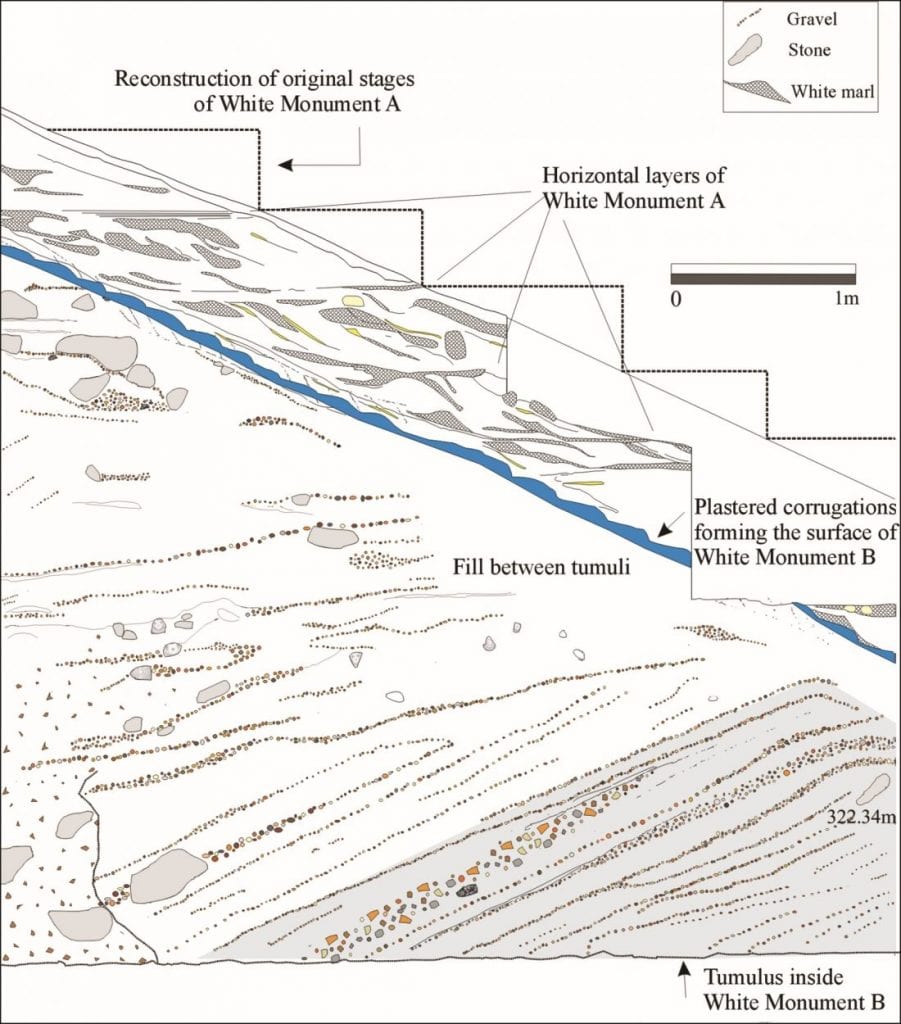Archaeologists have identified a 4,000-year-old memorial monument at the site of Banat-Bazi in Syria, that resembled the Ancient Egyptian Stepped Pyramid of Saqqara.
Known as the “White Monument” due to the white sheen given by the materials used in its construction, the artificial mound was first excavated by archaeologists several decades ago.
A new study has determined that the monument was added around 2,400 BC, where an earlier mound was modified with a series of horizontal steps, each containing at least 30 burials sealed in layers of plaster.
Ancient Mesopotamian texts reference war memorials where the corpses of enemies are piled in mass, although none have yet been discovered. However, the ‘White Monument’ at Tell Banat appears to be a memorial to the settlement’s dead, rather than to bury enemies fallen in conflict.

Professor Anne Porter from the University of Toronto said: “These findings not only challenged some of the excavators’ assumptions, but also some traditional underpinnings of Near Eastern archaeology. This would have looked much like the Stepped Pyramid of Saqqara, and was about the same size, but it was made of dirt, not stone.
The burials at the White Monument were carefully placed into a ritual setting alongside their military gear, sometimes alongside slinger’s pellets, and the skins of a kunga (a donkey-like equid breed often depicted pulling chariots).
“We recognized that there was a distinct pattern in the burials – pairs of bodies with skins of equids in one part of the monument, single individuals with earthen pellets in the other,” said Professor Porter, who suggested that the pairs buried with kunga skins may have been chariot teams.
Additionally, they found it was not a mass grave of those who fell in battle, but the deceased were deliberately reburied in the monument at a later point. The decision to carefully rebury the dead, likely with their military equipment, in a special addition to an existing monument provides strong evidence this was an effort by the community to celebrate their warriors. Find out more
The results of the study was published in the journal Antiquity.





